This year’s weather has been perfect for one of Sanctuary Lakes Estate’s expanding autumn crops, the seasonal growth of mushrooms, the fruiting body of the Fungus. Besides Mushrooms and Toadstools, the Fungi organisms includes yeasts, mildews and moulds. This organism is classified as a kingdom and is totally separate from other kingdoms such as Flora (plants) and Fauna (animals). Fungi has world wide distribution and grows in just about any habitat from deserts to deep sea sediments, areas of high salt to ionizing radiation. Equally amazing is that scientists seem to have evidence that Fungi may have been the first living organisms on our planet.
As always in Sanctuary Lakes when I need help there is an expert living here, and there is none better for Fungi than Tim Adlington Chairman of the Australian Mushroom Growers. Tim and I decided to take a stroll around the estate looking at and identifying the numerous mushrooms littering our grassy areas. As we started our walk Tim told me the basic tips to identifying mushrooms is to understand their structure. Start by upending the mushroom Cap and looking at its Gills beneath, noting their colour size and shape giving you initial clues to identifying the species.
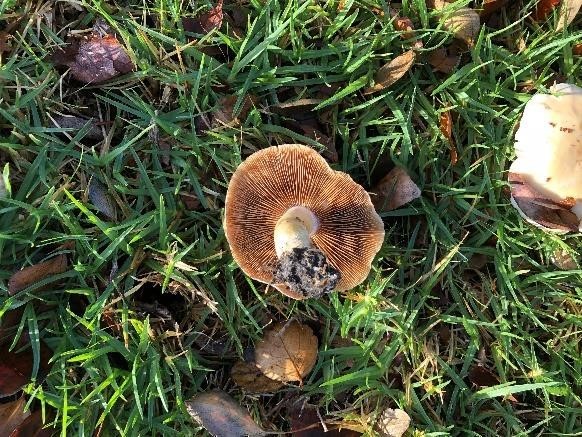
Upended mushroom showing its brown gills
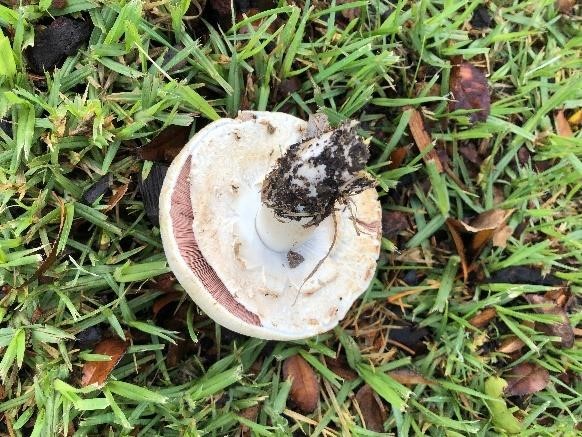
Another upended mushroomshowing pink gills with white veil
The mushroom spores, are produced on the Gills and fall in a fine rain of powder from under the caps.
Tim also gave a brilliant description of the mushroom and its fungi. The mushroom is like an apple fruit on the branch of an apple tree except the mushroom’s tree, the mycelium, is totally unseen, beneath the ground. This mass of threadlike white hyphae that make up the Fungus, can grow up to 15 metres in length. So, when you see groups of mushrooms, they are more than likely to be from the same mycelium, lying largely unseen and creating its thin but wide cooperative system beneath the ground. The mycelium does not expand as a globe but as a ring, with most of the activity near the ring's outer edge. Not surprisingly, mushrooms can sometimes appear on the ground to grow in a ring, producing the visually mystical, fairy rings.
Tim gave one word of warning to Sanctuary Lakes residents, “It is NEVER safe to eat a wild mushroom particularly from our Estate and Golf Course.” In order to assist good management of our grounds and course, maintenance staff will often use certain ground poisons. These poisons can leak in to the fungi’s mycelium and spread to its fruit, the mushroom. There are no reliable ways to tell if a fungus is poisonous or not, Cooking doesn't make a poisonous mushroom safe. In fact, you can be poisoned by breathing in the cooking fumes from some poisonous mushrooms. Various tests for edibility in folklore are also very un- reliable.
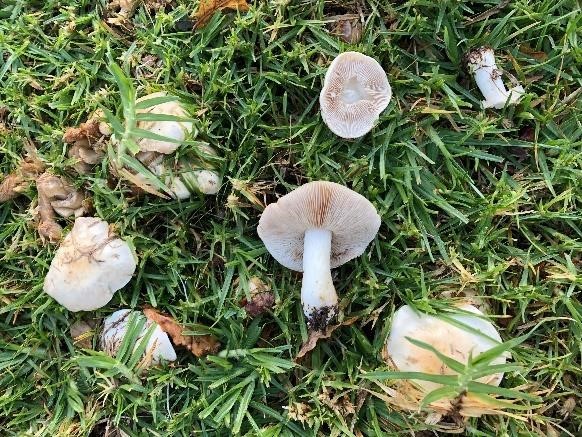
St Andres Square Clitocyboid mushroom.
Tim and I started our mushroom trail at St Andrews Square and Gallery Place. I’ve always found mushrooms growing around the square and today was no exception. Almost randomly scattered small groups of what Tim called Clitocyboid, a relatively common and inedible mushroom. Its genus is of a gilled mushroom that lacks partial veils and features white, yellowish, or pinkish spore prints, as well as gills that are broadly attached to the stem. They are equally saprotrophic, being environmentally rich in organic matter and relatively free from oxygen.
Walking back to the Boulevards, we found our next group of mushrooms growing along the medium strip opposite the Security Hut. These were one of the most common mushroom genus Agaricus.
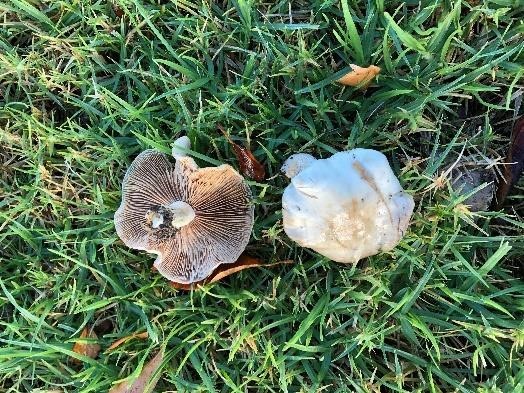
Agaricus Campestris, the field mushroom
The most well-known of the Agaricus family is the Agaricus Campestris, the field mushroom. Agaricus Campestris are very closely related to the familiar supermarket button mushrooms. They have a creamy white cap which rolls slightly when fully expanded. The Gills start as a light pink. Turn dark brown eventually black when the fruit matures. Its 10cm stalk is white with a single ring. Don’t pick and eat mushrooms that grow beside roads or other places where they may have accumulated, petrol, oil and other toxic fumes. Mushrooms have a natural ability to intake and store these gases.
Our next mushroom species discovery was the Coprinus Comatus, growing on the median strip outside Signature Boulevard, also we met another Coprinus grouping on the green patch by Jardin’s entrance.
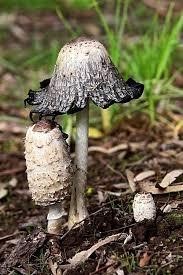
Coprinus Comatus
Coprinus also commonly called the shaggy ink cap, lawyer's wig, or shaggy mane, and is a common fungus often seen growing on Sanctuary Lakes short cut grasses, and beside the footpaths. The young fruit bodies will first appear as white cylinders emerging from the ground, then the bell-shaped caps open out. The caps are white, and covered with scales—this is the origin of the mushroom’s common names. The gills beneath the cap are white, then pink, then turn black and secrete a jet black liquid filled with spores (hence the "ink cap" name). This mushroom is unusual because it will turn black and dissolve itself in a matter of hours after being picked or depositing spores. The Coprinus is a very common mushroom in Australia, so much so that it was featured on an Australian postage stamp in 1981
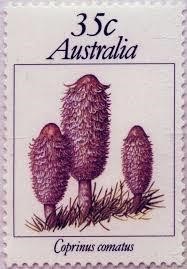
From Signature we walked along the Boulevard to the Jardin estate’s entrance where there were numerous mushrooms from the Agaricus genus just breaking through the ground. So, we can view the initial start of a mushroom, we gently pulled up a clump of formative Agaricus.
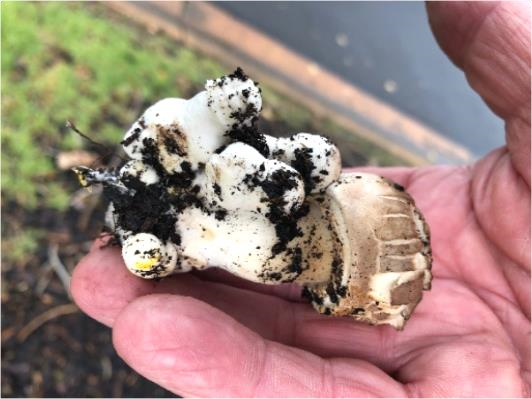
Clump of formative Agaricus
These formative mushrooms can be seen growing from the vegetative mycelium below the surface of the earth. Turning the root side up so, we can see the mycelium which looks like a fuzzy spider’s web. It is this web that feeds the nutrients to the mushroom, enabling them to grow to their maturity.
Unfortunately, we are only half way through our walk and I am running out of space. I will have to leave the next part for another Rubik. Meanwhile enjoy finding the Estate’s large varieties of mushroom colonies, but please do yourself a favour and buy your mushrooms at the retailer, where they are grown under strict, safe, food conditions.